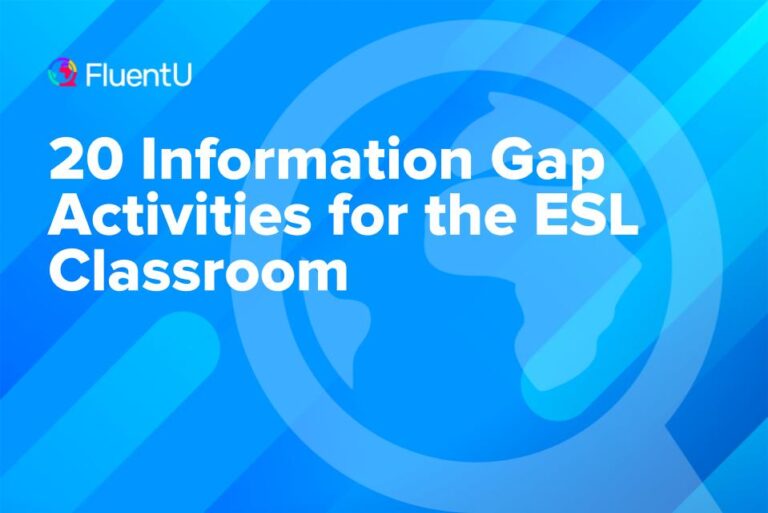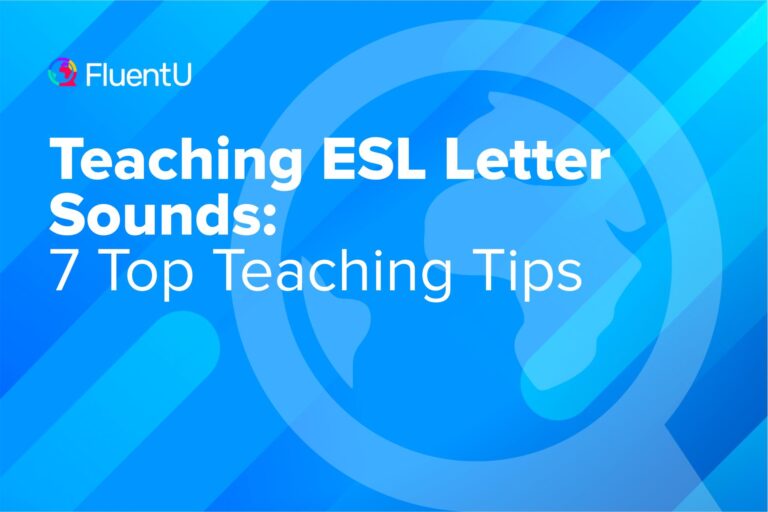5 Fun St. Patrick’s Day ESL Activities

St. Patrick’s Day is a fantastic opportunity to explore vocabulary and culture with your ESL students. St. Patrick is the patron saint of Ireland and this holiday is perfect to introduce students to Irish expressions and culture.
Here are some interactive and festive ESL activities to engage your ESL students and teach them about St. Patrick’s Day. Depending on the length of your lesson and the level of the students, use one or any combination of the following tasks to create an entertaining St. Patrick’s Day lesson.
Download: This blog post is available as a convenient and portable PDF that you can take anywhere. Click here to get a copy. (Download)
1. Coloring and Labeling St. Patrick’s Day Pictures
For your youngest students or beginner students, coloring is a fun way to apply new vocabulary. Give each student an outline of St. Patrick, a leprechaun or some collage of St. Patrick’s Day (Crayola has a nice set of coloring pages for the holiday).
Once students have colored in the image, ask them to label the picture, using the vocabulary related to St. Patrick’s Day.
This is a great way to introduce your students to the key themes of St. Patrick’s day, giving them a very visual way to help remember what they’ll learn in the lesson.
2. Vocabulary Treasure Hunt
Again, this is probably more appropriate for younger students, but it could also be effective for the young at heart!
Prepare a treasure hunt. Students must work together, solving riddles that utilize key vocabulary terms, to find the “pot of gold” at the end of the “rainbow.”
You can write as many riddles as you like. Each riddle or clue leads to the next riddle or clue and eventually the treasure. Be as creative and use as much space as you can. This works in the classroom or, if possible, expand the hunting field to the whole school. If you’re teaching in a warm climate, you may even take it outside.
As the teacher, you should provide and hide the “pot of gold,” which can be any reward for completing the treasure hunt successfully. Candy is probably the easiest and most rewarding gift. If you can, use chocolate gold coins or other gold-colored treats.
This lesson can easily be adapted for any level of ESL class. For beginners, use simple sentences and directions. For beginners or younger students, it’s more about understanding the language. For advanced students, offer more complicated riddles and clues for them to work out.
Tip: For an added level of fun, divide the class into teams. The teams not only solve the riddles, but must also compete against one another to reach the “rainbow” and find the “pot of gold.”
3. St. Patrick’s Day Around the World
St. Patrick’s Day isn’t exclusive to Ireland. In this activity, students use their English research and discussion skills to discover how different regions celebrate St. Patrick’s Day. For more advanced students, this can also be a great way to learn about Irish communities around the world.
Divide students into small groups. Assign each group a country or region that celebrates St. Patrick’s Day in some way. Ask them to research that region’s traditions. You can either provide each group with an article to read and summarize, or you can allow the students to conduct their own research using the classroom computers or their smartphones.
Provide guidelines for their research or a list of questions you want answered. For example:
Do they have parades?
Do they prepare special foods?
Do people wear green?
Do people go to church on St. Patrick’s Day?
Whether they read and report based on an article you gave them or do their own research, each group of students should prepare a small summary of their findings. At the end of class or during the next lesson, the students should present their discoveries to the whole class. In this way, everyone learns about the different traditions around the world.
4. Irish Proverbs
Learning and discussing Irish proverbs is another great activity for English language learners. You can discuss these proverbs as a class or in small groups. For younger students, you might ask them to illustrate their favorite proverb. However, in general, proverbs are probably more appropriate for older students or ESL students with a high level of language skills.
You can even challenge more advanced students with a matching game. Type up the following proverbs, print them and cut them in half. Divide students into teams. Give each team a set of the proverb segments. They must work with the other teams to match up the segments, completing the proverbs accurately. The first team to match all the proverbs wins.
Since St. Patrick’s Day is a holiday and gold is associated with it, it’s fun to offer a “treasure” to the winning team.
Irish proverbs:
May you live as long as you want, and never want as long as you live.
May the wind always be at your back.
Every man is sociable until a cow invades his garden.
You’ve got to do your own growing, no matter how tall your father was.
I complained that I had no shoes until I met a man who had no feet.
May you have the hindsight to know where you’ve been, the foresight to know where you’re going and the insight to know when you’ve gone too far.
A good laugh and a long sleep are the two best cures.
Here’s to eyes in your heads and none in your spuds.
Don’t be breaking your shin on a stool that’s not in your way.
May misfortune follow you the rest of your life, and never catch up.
May your home always be too small to hold all your friends.
You’ll never plough a field by turning it over in your mind.
These are just some of my favorite bits of Irish advice. You can find these and many more fun and useful Irish proverbs at the Ottawa Citizen.
Tip: With proverbs you can always extend the lesson by asking English discussion questions:
What’s your favorite proverb? Why?
Do you have a similar proverb in your language?
5. Great Irish Writers
If you’re looking for a more subtle way to acknowledge the Irish this St. Patrick’s Day, take some time to honor the great Irish writers. Introduce your most advanced students to Irish literature. Choose from any number of the wonderful writers Ireland has given the world, such as James Joyce, W.B. Yeats or Oscar Wilde, to name a few.
You can present this type of lesson in a number of ways. As a class, you could read a short biography of one of the Irish writers and learn about their famous works. Read an excerpt of their work and have a discussion based on the excerpt.
Another option is to divide the class into small groups and assign each group a famous Irish writer. The group should research the writer, summarize one of their famous works, analyze a short excerpt and submit an inspirational quote by the author. Each group should present their findings to the whole class.
St. Patrick’s Day Vocabulary for Your Lesson
Here are some of the most relevant and useful vocabulary words related to St. Patrick’s Day.
Green
Leprechaun
Gold
Ireland
Irish
Rainbow
Pot (of gold)
Four-leaf clover
Hat
Harp
Saint
Church
Shamrock
Feast
Christian
Festival
Calendar
March
Jig
Legend
You may start your lesson by telling the class a story about the holiday, including some of the history and how it’s celebrated today, with your key vocabulary words incorporated into the story.
Following the story, if you feel students need some additional practice before the activities, you can do any number of common ESL vocabulary games. Here are some easy online templates to make word scrambles, word searches or fill in the blank worksheets.
These lessons can be used individually or in combination with one another. Either way, they’ll help to make a fun and educational St. Patrick’s Day for you and your ESL students.
Happy St. Patrick’s Day!
Download: This blog post is available as a convenient and portable PDF that you can take anywhere. Click here to get a copy. (Download)
And One More Thing...
If you like learning English through movies and online media, you should also check out FluentU. FluentU lets you learn English from popular talk shows, catchy music videos and funny commercials, as you can see here:
The FluentU app and website makes it really easy to watch English videos. There are captions that are interactive. That means you can tap on any word to see an image, definition, and useful examples.
For example, when you tap on the word "searching," you see this:
Learn all the vocabulary in any video with quizzes. Swipe left or right to see more examples for the word you’re learning.

FluentU helps you learn fast with useful questions and multiple examples. Learn more.
The best part? FluentU remembers the vocabulary that you’re learning. It gives you extra practice with difficult words—and reminds you when it’s time to review what you’ve learned. You have a truly personalized experience.
Start using the FluentU website on your computer or tablet or, better yet, download the FluentU app from the iTunes or Google Play store. Click here to take advantage of our current sale! (Expires at the end of this month.)










